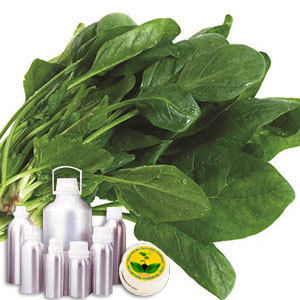Botonical Name | : | Psyllium | |
CAS # | : | N/A | |
Country of Origin | : | China | |
Color & Odor | : | Green | |
Solubility | : | Soluble in water and alcohol | |
Specific Gravity | : | 1.130–1.35 @ 20°C | |
Optical Rotation | : | (-)1.5 –(-)4 @ 15°C | |
Refractive Index | : | 1.044 –1.054@ 20°C | |
Flash Point | : | > 200.00 °F | |
Plant Part Used | : | Leaves | |
Extraction Method | : | Solvent Extraction |
DESCRIPTION:
It is a semi-synthetic copper derivative of chlorophyll, which is extracted by alkaline hydrolysis of chlorophyll with replacement of the magnesium by copper and methyl and phytyl ester groups by sodium and potassium. It is a food additive, water-soluble and can be used as an alternative medicine. CONSTITUENTS:
The main components are copper chlorophyll trisodium and copper chlorophyll tartrate. AROMATIC SUMMARY / NOTE / STRENGTH OF AROMA:
Characteristic Chlorophil . BLENDS WITH:
It mix well with olive and other essential oils. COMMON NAMES:
Chlorophyll pigments, CZE, Synthetic chlorophyll. USES:
This natural extracts are useful for both treatment and odor control of wounds, injuries and other skin conditions. Found as a topical preparation, it is largely used in various cosmetics and pharmaceutical preparations. Due its clear chemo-preventive activities, it is popular as a food colorant and dietary supplement. The strong color of chlorophyll is useful as a commercial pigment and used as a green dye for food, toothpaste and detergents.


































